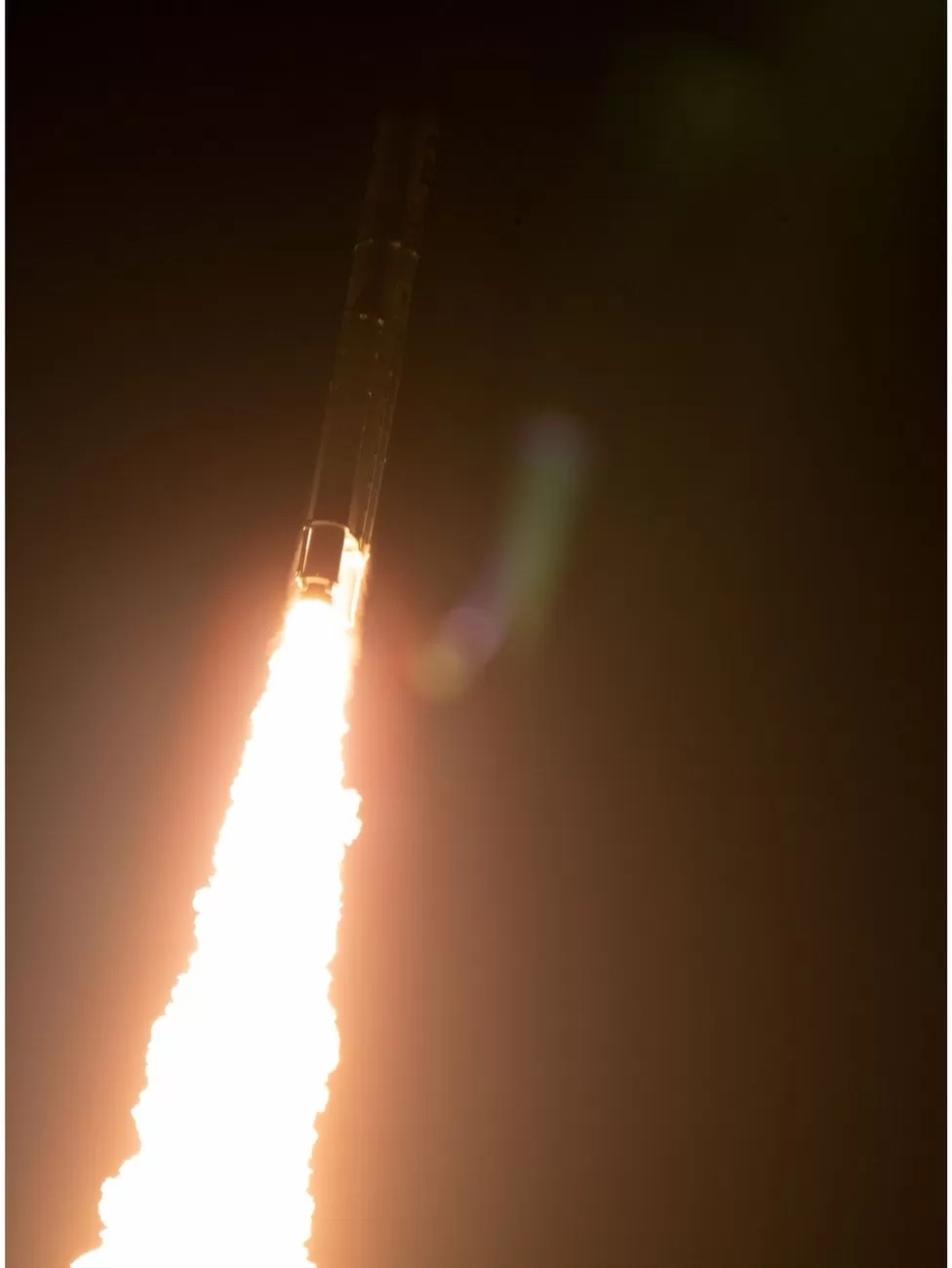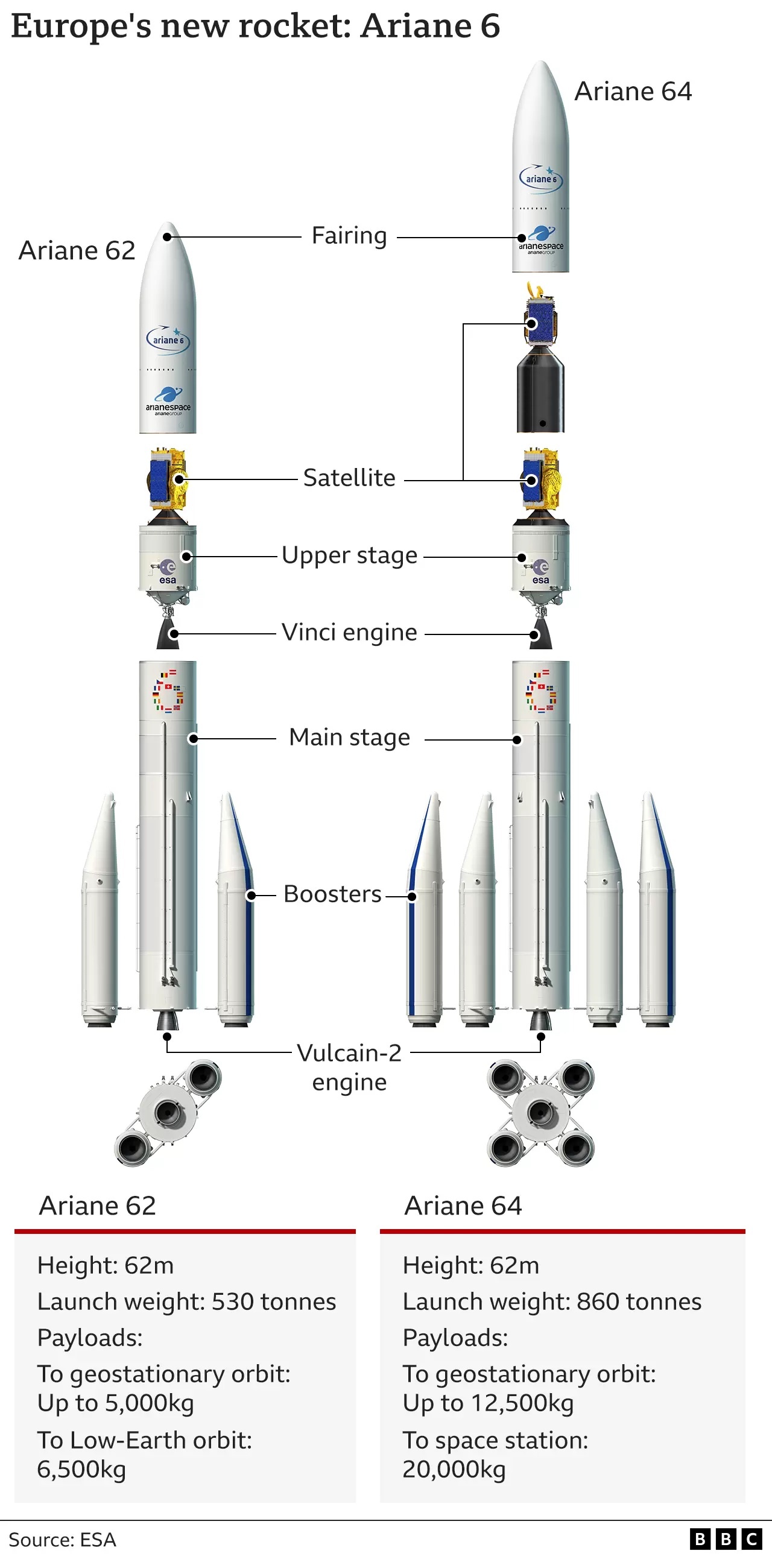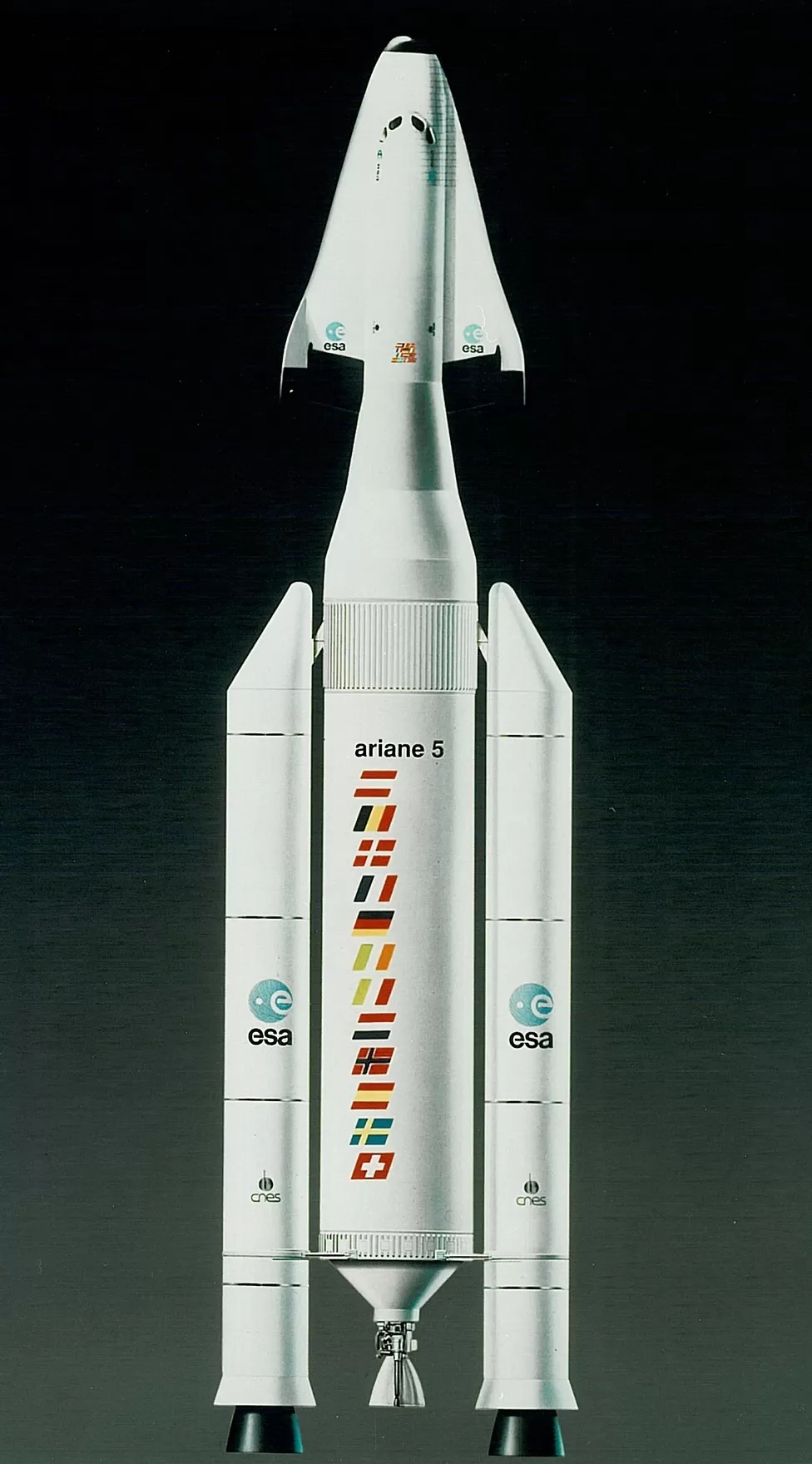7.07.2023
The Ariane-5, Europe's heavy-lift rocket, has flown its final mission.
The vehicle, which has underpinned the continent's access to space for nearly three decades, ended its career by taking up two telecoms satellites.
It is generally agreed to have been a highly successful launcher, having suffered only two outright failures in 117 outings.
But the Ariane-5's retirement leaves Europe in a difficult position, with no replacement ready to take over.
The next-generation rocket, the Ariane-6, is still going through a development and testing phase and may not make its debut until next year.

One last time: The Ariane soars over the Kourou spaceport
To compound matters, Europe can no longer use Russian Soyuz rockets, and its smaller vehicle, the Vega-C, has been benched following an in-flight failure last December.
European satellites have been forced to use American services instead. Last Saturday, the €1.4bn (£1.2bn) Euclid space telescope was lofted on a SpaceX Falcon-9 from Florida.
The unavailability of home-grown rockets prompted European Space Agency director general Josef Aschbacher to declare recently that "Europe finds itself... in an acute launcher crisis".
Wednesday's final mission was conducted, as usual, from the Kourou spaceport in French Guiana.
The two "passengers" onboard were a French defence satellite, named Syracuse 4B, and a German demonstration spacecraft, named Heinrich Hertz.
The Ariane got away right at the start of its launch window at 19:00 local time (22:00 GMT; 23:00 BST).

The Ariane 6 will work in two versions to complete a range of missions
Dr Aschbacher said the Ariane-5 would be remembered as a remarkable vehicle.
"The performance and the accuracy of the Ariane-5 has been quite unique, but I'm convinced that Ariane-6 will have the same performance and the same accuracy once it's on the launch pad," he told BBC News.
The famed accuracy was perhaps best demonstrated on 25 December, 2021, when the rocket lofted the $10bn (£8bn) James Webb Space Telescope.
The injection into orbit was so precise the observatory did not have to use any of its own fuel to correct the trajectory, effectively doubling a projected operational lifetime from 10 to 20 years.
A new European heavy-lift rocket was commissioned because the cost of producing the Ariane-5 became unsustainable in the face of US competition.
Entrepreneur Elon Musk's SpaceX company has upended the launch market with his re-usable Falcons, undercutting the Ariane's price point.
The Ariane-6 is intended to be at least 40% cheaper than the Ariane-5, but it remains an "expendable" design: a new rocket is needed for every mission.
Europe is moving towards re-usability but the necessary technologies will not be in service until the 2030s.
In the meantime, Mr Musk is introducing even bigger rockets that promise to reduce launch prices still further.
Wednesday's final Ariane-5 flight passed off flawlessly, with Heinrich Hertz and Syracuse 4B released on a path to a geostationary orbit about half an hour after leaving the ground.
Ariane-5 goes into retirement having lifted more than 230 satellites into orbit, equating to almost 1,000 tonnes of hardware.
As well as James Webb, high-profile missions have included the launch of the comet-chaser Rosetta (2004); the giant environmental observer Envisat (2002); the 20-tonne space station freighter, ATV (2008); and, most recently, Europe's Jupiter moons explorer, Juice (2023).
The rocket was conceived in the 1980s as a way of launching an astronaut shuttle called Hermes. That plan was abandoned because of cost, and the vehicle was brought into service in 1996 purely to loft satellites.
For much of its career, it was launching half of all big telecommunications satellites.

Artwork: There was a plan for Ariane-5 to launch an astronaut shuttle
Quelle: BBC

